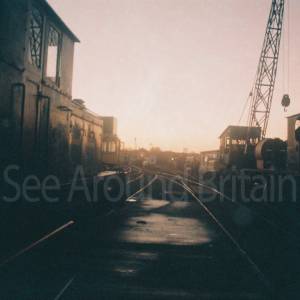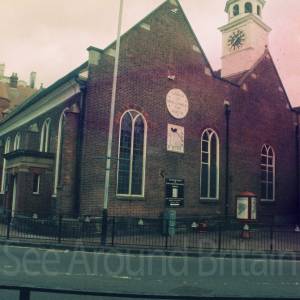Tunbridge Wells, Kent
Details
Accessibility
Brief description
https://en.wikipedia.org/wiki/Royal_Tunbridge_Wells
"Royal Tunbridge Wells is a town in Kent, England, 30 miles (50 kilometres) southeast of central London. It lies close to the border with East Sussex on the northern edge of the High Weald, whose sandstone geology is exemplified by the rock formation High Rocks. The town was a spa in the Restoration and a fashionable resort in the mid-1700s under Beau Nash when the Pantiles, and its chalybeate spring, attracted visitors who wished to take the waters.[2] Though its popularity as a spa town waned with the advent of sea bathing, the town still derives much of its income from tourism.[3]
The town has a population of around 56,500,[4] and is the administrative centre of Tunbridge Wells Borough and in the parliamentary constituency of Tunbridge Wells.
By the early nineteenth century Tunbridge Wells experienced growth as a place for the well-to-do to visit and make their homes. It became a fashionable resort town again following visits by the Duchess of Kent, Queen Victoria and Prince Albert,[10] and benefited from a new estate on Mount Pleasant and the building of the Trinity church in 1827,[10] and improvements made to the town and the provision of facilities such as gas lighting and a police service meant that by 1837 the town population had swelled to 9,100.[13] In 1842 an omnibus service was set up that ran from Tonbridge to Tunbridge Wells, enabling visitors to arrive from London within two hours,[17] and in 1845 the town was linked to the railway network via a branch from South Eastern Railway's London-Hastings Hastings Line at Tonbridge. During this time Decimus Burton developed John Ward's Calverley Park estate.[20]
In 1889 the town was awarded the status of a Borough, and it entered the 20th century in a prosperous state. 1902 saw the opening of an Opera House, and in 1909 the town received its "Royal" prefix. Due to its position in South East England, during the First World War Tunbridge Wells was made a headquarters for the army, and its hospitals were used to treat soldiers who had been sent home with a "blighty wound"; the town also received 150 Belgian refugees. The Second World War affected Tunbridge Wells in a different way—it became so swollen with refugees from London that accommodation was severely strained. Over 3,800 buildings were damaged by bombing, but only 15 people lost their lives.[17]
Following the war, large-scale housing estates were built at Sherwood and Ramslye to accommodate population growth.
The town is at the northern edge of the High Weald, a ridge of hard sandstone that runs across southern England from Hampshire along the borders of Surrey, West Sussex, East Sussex and Kent—the town's geology is illustrated by the exposed sandstone outcrops at the Wellington Rocks and High Rocks (a Site of Special Scientific Interest due to its exposed gulls[35]), and the quarries at nearby Langton Green from which sandstone was taken to build houses in Tunbridge Wells.[36] The town is sited at the head of a valley that runs south-east to Groombridge; like the River Teise, which originates in Tunbridge Wells,[37] the stream in the valley is one of the many tributaries of the River Medway, which runs through a much larger valley north of the High Weald. The Tunbridge Wells Sand Formation geological unit takes its name from the town.
Nearby villages have been subsumed into the built-up area of the town, so that now it incorporates High Brooms to the north, Hawkenbury to the south, and Rusthall (whose name resonates with the iron content of the rocks) to the west."Address
The Pantiles
London Road
Tunbridge Wells
TN2 5TD
https://tunbridgewells.gov.uk/find-and-contact-us/contact-us
Phone
Website
https://visittunbridgewells.com/
https://www.thetunbridgewellsproject.co.uk/the-ritz-cinema
https://www.thetunbridgewellsproject.co.uk/about
https://www.thetunbridgewellsproject.co.uk/the-architecture
Directions
"Tunbridge Wells is at the hub of a series of roads, the primary ones being the A26, which runs from Maidstone to Newhaven; the A264, which runs from Five Oaks to Pembury (via Crawley and East Grinstead); and the A267, which runs south from Tunbridge Wells to Hailsham. The A21 passes to the east of the town, following the route of its turnpike ancestor, from London to Hastings."
Opening Times
Always check with the venue directly for up-to-date information including opening times and admission charges as they may be subject to change
Transport
2024: "Bus services are operated chiefly by Arriva Kent & Sussex, providing local town and rural services to Tonbridge, Paddock Wood and Sevenoaks, as well as express services to locations such as Bromley and Maidstone. Eastbourne and Brighton on the south coast are accessible on services run by Stagecoach in Eastbourne and Brighton & Hove respectively, and Metrobus operates hourly services to Crawley.
Tunbridge Wells town historically had three railway stations: two of these are still in use by National Rail services. Tunbridge Wells station is, as its former name of Tunbridge Wells Central suggests, centrally located within the town at the end of the High Street, whilst High Brooms station is situated in High Brooms, to the north of the town. Both stations are located on the double-tracked electrified Hastings Line; services are operated by the Southeastern train operating company.
Tunbridge Wells West station was opened by the London, Brighton and South Coast Railway in 1866 as the terminus of its competing line to Tunbridge Wells, but closed in 1985 along with that line.[50] The station building—a Grade II listed building—is now a restaurant, and a Sainsbury's supermarket occupies the former goods yard. Part of the line was reopened in 1996 by the Tunbridge Wells and Eridge Railway Preservation Society,[51] which now—as the Spa Valley Railway—operates a steam heritage railway that runs from Tunbridge Wells West to Eridge via High Rocks and Groombridge. The western end of the service was extended from Groombridge to Eridge, on the London-Uckfield line of Southern Railway, on 25 March 2011, serving a platform at Eridge which had been disused for many years. The tunnelled link line between the West and erstwhile Central stations, opened in 1876, remains closed.
In 2009 Network Rail installed a 12-car turnback siding just south of Tunbridge Wells station between the Grove Hill and Strawberry Hill tunnels to facilitate a more frequent service and to allow restricted types of London trains starting or terminating at Tunbridge Wells to be operated in 12-car formations. Previously such services were 11-car at most.[52][53]
Average daily passenger flows on trains between Tunbridge Wells and London have increased from about 10,000 in 1999 to over 12,500 in 2008, a compound growth rate of about 2.5% per year. Average daily passenger flows between Tunbridge Wells and Sevenoaks, and between Tunbridge Wells and Tonbridge, have grown considerably faster, though are still much smaller than the flows between Tunbridge Wells and London.[54] "
Amenities
"Tunbridge Wells has a library, museum and art gallery in Civic Way. The town's largest theatre is the Assembly Hall in Crescent Road, which has a capacity of 1020. Nearby, in Church Road, is the Trinity Arts Centre which is a converted church.
The Forum is a 250-capacity live music venue in the town, run by Jason Dormon, where many bands have played their early concerts on their way to success.[80] The Forum is an independent music venue in Royal Tunbridge Wells, Kent, England, with a standing capacity of 250. The venue opened in 1993, the building having previously been a public toilet.[1]The Forum is located on Tunbridge Wells Common, close to the junction of the A26 London Road and Frant Road, opposite the Church of King Charles the Martyr and The Pantiles. It is approximately five minutes walk from Tunbridge Wells station. https://en.wikipedia.org/wiki/The_Forum,_Tunbridge_Wells + https://www.twforum.co.uk/
Unfest is an annual free music festival which takes place in May.[81]
Tunbridge Wells held its first TEDxRoyalTunbridgeWells on 6 June 2015.[82]
The Pantiles and its chalybeate spring have been the landmarks most readily associated with Royal Tunbridge Wells ever since the founding of the town, though the 5-metre-high (16 ft) steel Millennium Clock at the Fiveways area in the centre of town, designed by local sculptor Jon Mills for the Millennium celebrations, stakes a claim to be a modern landmark.[71][72]
Tunbridge Wells contains green spaces that range from woodland to maintained grounds and parks.[73] The most substantial areas of woodland are the Tunbridge Wells and Rusthall Commons, which comprise 250 acres (100 hectares) of wood and heathland and are close to the centre of the town. Open areas of the common are popular picnic spots, and there is a maintained cricket ground situated next to Wellington Rocks.[74]
Located in the town centre opposite the railway station, Calverley Grounds is a historic park with ornamental gardens and a bandstand (now demolished). The park was part of Mount Pleasant House, which was converted into a hotel in 1837, until 1920, when the borough council purchased it for the town. The bandstand dated from 1924 and was damaged by an incendiary bomb in 1940 and parts of the metalwork were sold for scrap metal. The subsequently repaired bandstand and the adjacent pavilion were intended to form part of a new centre to the park but were never completed. The bandstand was demolished in 2010 although the pavilion still exists as a café.[75] Just inside the entrance to the park coming from the station is a memorial to Air Chief Marshal Lord Dowding, hero of the Battle of Britain, who lived and died in Tunbridge Wells.[76]Dunorlan Park, at 78 acres (32 hectares) the largest maintained green space in the town, was once a private garden that was part of the millionaire Henry Reed's now demolished mansion, and only passed into public possession in 1941.[37] The gardens were designed by the Victorian gardener James Green, but over the years they became overgrown, making it hard to distinguish the full scope of Marnock's design. In 1996 Tunbridge Wells Borough Council applied to the Heritage Lottery Fund for a grant to restore the park in line with the original designs, and in 2003/4 Dunorlan underwent a £2.8 million restoration. The River Teise rises in the park, and two dams on it have created a pond and a boating lake.[37] Dunorlan is listed as Grade II on English Heritage's National Register of Historic Parks and Gardens.[77]
Great Culverden Park is a small, 9+1⁄2-acre woodland in the Mount Ephraim area behind the site of the old Kent and Sussex Hospital and is the remnant grounds of the previous Great Culverden House designed by Decimus Burton that used to stand on Mount Ephraim.
The oldest public park in Tunbridge Wells is Grosvenor Recreation Ground designed by landscape architect Robert Marnock, located close to the town centre on Quarry Road. It was opened in 1889 by Mayor John Stone-Wigg, on the land that was formerly Caverley Waterworks. The lake area with dripping wells remains, but the other lakes, bandstand and open air pool have all gone. There is a bowls club, café, toilets and children's play area, including cycle track. It is adjoined by the Hilbert recreation ground, parts of which have been designated as a local nature reserve by the Kent High Weald Partnership; these include Roundabout Woods and the adjoining grass areas. The Hilbert Recreation Ground was donated to the town by Cllr Edward Strange in 1931, on the site of the form John Beane's Charity Farm. There are two football pitches, built as part of the King George V playing fields scheme, and a skatepark.[78]
The Salomons Museum preserves the home of David Salomons, the first Jew to serve as Lord Mayor of London and the first non-Christian to sit in Parliament. It preserves the bench from which Salomons rose to speak as the first Jewish MP ever to speak in Parliament.[79] "
Travel Information
For further travel information please see: www.traveline.info
Or call Traveline on 0871 200 22 33
(Calls cost 12p per minute plus your phone company's access charge)











